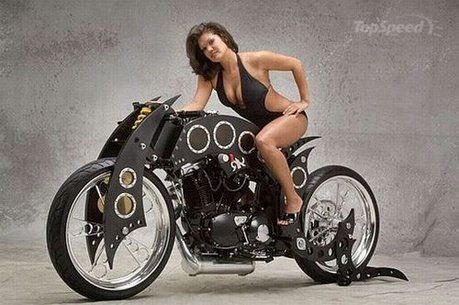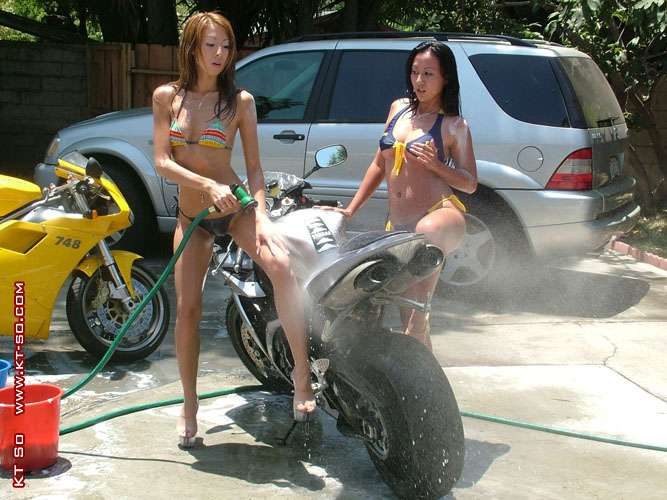In order to make the YZ250 meet emissions for all of Yamaha’s global markets, the silencer was increased in length by 75mm and the core diameter swelled from 27 to 30mm. This allows for 66% more glass wool and the decibel output is now a claimed 96 dB. Unlike the 125, which required minor jetting changes, Yamaha altered the 250 cylinder head to increase the volume by 0.5cc and dropped the compression ratio from 10.9:1 to 10.6:1. Yamaha claims this helps with lower fuel qualities as well. Otherwise, it’s the same old YZ250 that has been available for the past several years, with a chassis that hasn’t changed since 2005.
2011 Yamaha YZ250
Yamaha hasn't done anything radical to the YZ250, but it still has a powerful, responsive engine that works very well in the right conditions.
Fortunately for Yamaha, and all aspiring racers, the AMA now allows 250 two-strokes to race alongside 250F machines in amateur competition – making it a true 250 division. There’re a lot of arguments about two-strokes versus four, but there’s no denying that the 2T makes more horsepower and weighs less, which are critical factors for racing and simply the enjoyment factor. To see some comments on the subject, check out the rider reviews from when we compared the 2009 YZ250 with a batch of same-sized thumpers during our 2009 250 Motocross Shootout.
Our day of testing at Milestone MX had soft, moist dirt all around – perfect for the zingy YZ – and soon our concern was trying to keep the front end down. Yamaha uses a 66.4 x 72mm bore and stroke to crank out an abundant power curve that is generous down low and surges into a ripping upper midrange and top end. Keeping the YZ on the meat of its powerband is easy to do with a smooth, light clutch and clean jetting. Our faster riders were keen to keep the bike singing at all times and had no complaints about the Keihin carburetor.
“’Awesome’ is about the best word to explain the motor on the YZ250," says test rider Nick Thiel. "You can short-shift the bike and it pulls great, or over-rev it. The throttle response is crisp and it has that great two-stroke feel. I couldn't ride this bike enough; it was an absolute blast. The motor just plain rips and the faster and harder I rode it the better it seemed to run.”
Attacking Milestone’s jumpy track with a snappy powerband was more difficult for our slower riders as controlling the hit takes a little getting used to. It definitely doesn't have the mindlessly smooth power curve of its four-stroke counterpart. Keeping below the horsepower hit to smooth out jump faces is accomplished with a quick upshift from the five-speed transmission, and it still has the power to get over obstacles. Proper gearing is important and our testers had varying opinions about the stock sprockets.
2011 Yamaha YZ250
2011 Yamaha YZ250
Climbing off the multitude of four-strokes and spinning laps on the YZ250 is a breath of fresh air, especially for those who like to whip.
“The only issue I had was the in tight switchback sections where I was between second and third gear,” says pro-level rider Chris See. “To fix that I would go up one or two teeth on the rear sprocket depending on the track, also to give the bike a little more bark out of the corners.”
All of our riders liked the lightweight (227 pounds claimed) feel and responsive aluminum chassis. Getting the bike to turn in rutted corners takes almost no effort and the bike glides through rough corner entries with little concern. The Kayaba suspension is good, but not perfect. More than one of our testers found the 48mm speed-sensitive fork to be harsh in the midstroke, though speedy intermediate Nick Thiel thought otherwise.
“The suspension on the YZ250 is great right out of the box,” argues 175-pound Thiel. “It has surprisingly good bottoming resistance with no mid-stroke harshness and great initial feel. It sits high in the stroke in the rougher sections but also settles well in the inside ruts. It has a really balanced feel around the whole track.”
See struggled with an unbalanced feel which affected the handling, but had success after getting a better feel for alternate clicker settings.
“I think the fork is too stiff for the rear end, which makes it very difficult on flat turns or turns without a rut or berm,” he says. “I softened the front compression, added more rider sag on the shock and firmed up the high-speed compression and sped up the rebound. After we made those small adjustments it was a wonderful machine.”
Even while trying to sort out the suspension, it’s still obvious that the YZ is a quick-handling machine. Changing lines through rolling whoops is simple and picking lines through corners leaves riders plenty of options. Rider ergonomics are comfortable and moving around on the saddle is simple with a flat profile and handlebar/footpeg placement that suited our riders varying from 5’10” to 6’1” in height. Despite outdated bodywork, the midsection is easy to grip and the bike responds quickly and easily to rider input. A side note about the blue plastics, the rear fender is the worst and we’d love to see it updated to match the sharper four-stroke line. The same can be said for the YZ125 for that matter. Watching our fast guys toss the bike in the air over every single jump on every lap was a good sign that it’s pretty dang fun to handle in the air.
2011 Yamaha YZ250
2011 Yamaha YZ250
Amateur riders looking for a 250 to win races on can consider the YZ a viable option.
“I was able to turn underneath a lot of the four-strokes, but the bike also rails the outsides,” says Thiel about the YZ’s handling. “It works awesome on the face of jumps and is really easy to scrub on as well. The cockpit definitely has you in attack position at all times, which I love.”
All four of our testers enjoyed the YZ250’s potent powerplant and lightweight handling, though our two fastest riders definitely enjoyed it most. While it’s not at the competitive level of 450 motocrossers, all could agree that for amateurs competing in the 250 class, the YZ can be a viable option for collecting trophies. At $7150, it's the same price as a YZ250F, but it can also be raced in the 450 division where it costs considerably less than the competition.
“I still don't believe this bike can compete in the premiere class (professionally) week in and week out," says regular 450 pro racer, See. "On the right track this bike could be right in there with the big bikes because of its light, agile aspect. The YZ250 is a great machine for the weekend warrior who just wants a good time and a machine that you can just mix your gas and ride.”
“I can't fathom why these bikes have become a thing of the past,” adds Thiel. “The two-stroke is extremely easy and cheap to maintain, they are an absolute blast to ride and the 250 is still extremely competitive. Why every amateur racer doesn't race these in the 250F class is beyond me.”
 yamaha yzf 125 r 2008
yamaha yzf 125 r 2008 yamaha 125
yamaha 125 yamaha 125 yzf r125
yamaha 125 yzf r125 yamaha yzf 125
yamaha yzf 125 yamaha 125
yamaha 125












